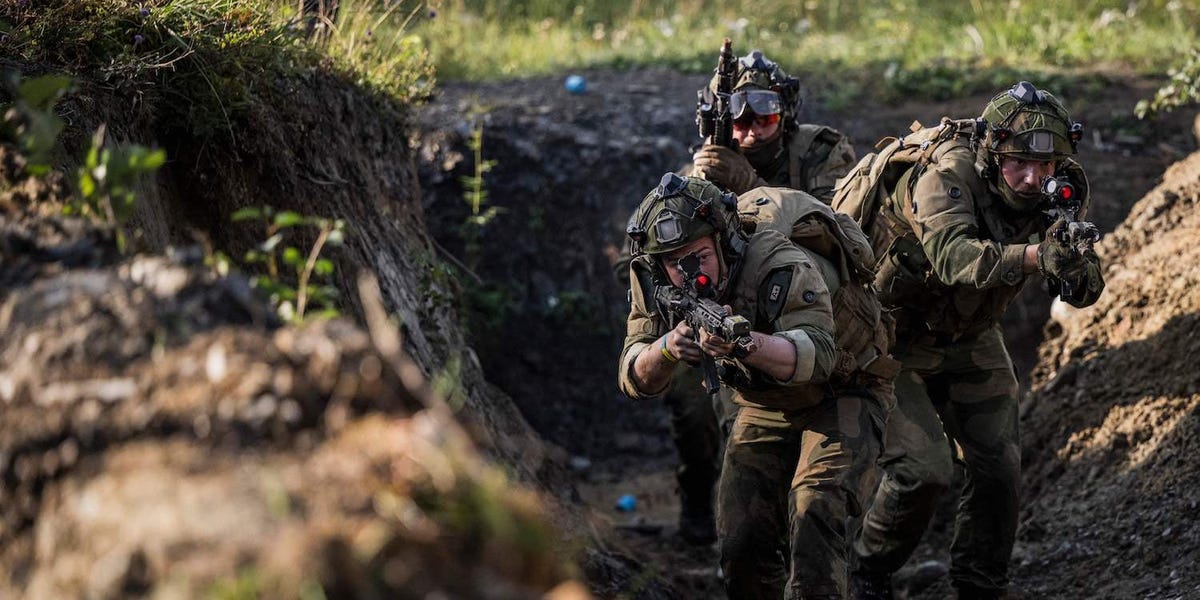Western-made armor is failing in Ukraine because it wasn’t designed to sustain a conflict of this intensity, a military analyst told The Wall Street Journal.
Taras Chmut, a military analyst who’s the head of the Come Back Alive Foundation, which has raised money to purchase and provide arms and equipment to Ukraine, said that “a lot of Western armor doesn’t work here because it had been created not for an all-out war but for conflicts of low or medium intensity.”
“If you throw it into a mass offensive, it just doesn’t perform,” he said.
Chmut went on to say Ukraine’s Western allies should instead turn their attention to delivering simpler and cheaper systems, but in larger quantities, something Ukraine has repeatedly requested, the newspaper reported.



Have you been watching General Dynamics promotional videos?
The early stages of the Ukraine war showed that even massive superiority in combined arms is useless because of how asymmetric warfare has become. Your million dollar tank is just as vulnerable to a $500 drone as a twenty thousand dollar Jeep. Your hundred million dollar jet is still going to get shot out of the air in a CAS role by a $10000 missile. The only wars that the West have been able to fight have been against insurgents riding in the back of old Toyota Hiluxes carrying Soviet-era AK-47s.
Modern Western tank doctrine values crew survivability, even at the cost of maintainability and production capacity. It’s the same design principle that the Nazis used to justify the Tiger, Panther, and Konigstiger (mind you, Nazi doctrine also relied heavily on tightly integrated combined arms).
Interesting. I know that Ukraine was given a bunch of handheld anti tank weapons to great effect. And I guess the Bradleys are supposed to be adept as tank killers?
I’m not sure what Russia has in the way of similar besides drones.
Why do they even need the M1 tanks?
Russia has actually gotten quite good at drones.
But the Jeep vs. tank comparison is bunk, especially the direct dollar value comparison: Your million dollar tank shoots way further, hits way harder, and its crew will survive when hit. Instead of having to train a new one and write letters to their families you now have a veteran crew that probably learned an important lesson.
We’re seeing the opposite approach on the Russian side – have cheap tanks that blow up easily and take out the crew with them. They have lots of tanks, and also lots of people (at least in principle), but they don’t have nearly enough training capacity to teach new crews.
Even if Ukraine wanted to it could not afford that approach. Neither in terms of manpower, nor in political terms: As we all know war is the continuation of politics and not employing Soviet meat grinder doctrines is very much part of the whole not wanting to be Russia thing. If Ukrainians wanted to be subject to Dedovshchina they wouldn’t be fighting in the first place.
Numbers. Abrams are a pain in the arse for logistics but there’s a ton of them around collecting dust in the US, Leos and everything else are in way shorter supply.
You could marginally increase the survivability of one tank (say, by 20%)… Or you could build another tank and increase the survivability of someone that would otherwise be infantry by an order of magnitude.
Tanks take bags of flesh off the battleground and that’s extremely advantageous.
The US operates under the assumption that they will be fighting a war on the other side of the world, so designing a more robust tank is important both in terms of PR (because dead bodies coming home is bad), in terms of logistics (because shipping twice the number of tanks around the world isn’t that great), and in terms of who they’re fighting (mostly insurgents without advanced anti-tank munitions, so survivability is far higher when hit).